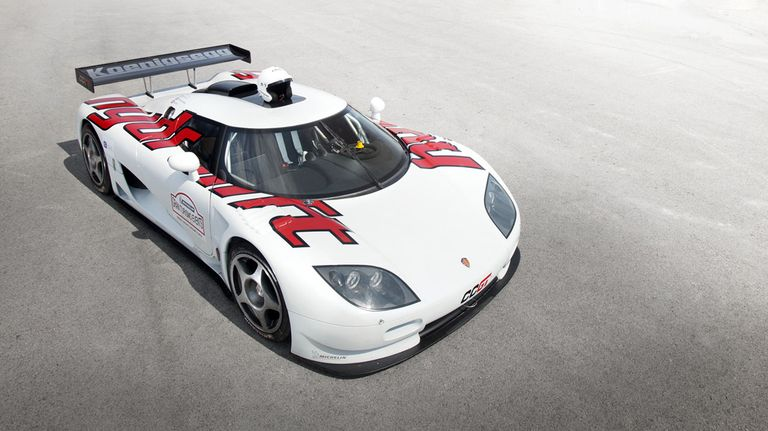Search the Community
Showing results for tags 'world endurance championship'.
-
<Why Koenigsegg Never Went Racing, And Why It Doesn't Plan to Start Christian von Koenigsegg explains why his cars have never competed at Le Mans, and why he doesn't intend to participate in the new Hypercar class. KOENIGSEGG Despite building some of the most innovative supercars on earth, Koenigsegg does not currently have a racing team. That's not for lack of trying: Founder Christian von Koenigsegg actually built a viable race car with intent to compete at the 24 Hours of Le Mans when his company was in its infancy. But it never happened, and during a lengthy conversation with the man behind the Swedish performance car company, we learned more about why his Le Mans ambitions fell apart—and whether he hopes to try again. In 2007, Koenigsegg built a fully-functional race car that exactly followed the FIA's Group GT1 rules. The race car, called CCGT, bore a strong resemblance to Koenigsegg's second production model, the CCR. But its roots went back even further, to the very first prototype Koenigsegg built, called CC. As explained on a Koenigsegg company blog post, the original CC, and the race car it spawned, was designed to fit exactly into GT1's dimension requirements: The car could be two meters wide at the maximum, and the cockpit had to span 70 percent of the vehicle's overall width. It had a dry weight of 2200 pounds (significantly below the minimum weight for GT1, which would mean adding ballast to reach the required weight) and was powered by a naturally aspirated V-8 making well over 600 horsepower. But two months after the CCGT's first shakedown runs, the ACO and FIA had a change of heart. The governing bodies banned carbon-fiber monocoque construction, which was used in every Koenigsegg road car and thus formed the basis of the CCGT. The regulators also raised the minimum production requirement dramatically. Previously, an automaker was required to construct 20 street-legal examples of a model, in total, to be eligible to race. After the 2007 change, that number rose to 350 cars per year, impossible for a tiny automaker like Koenigsegg to achieve. The CCGT was ruled out of the class before it ever competed in a single race. The only Koenigsegg CCGT ever built. | KOENIGSEGG "We were aiming to go racing in the GT1 series, which was perfect for our type of cars—road-going hypercars turned race cars" von Koenigsegg told Road & Track during a recent, lengthy conversation. "Then they shut it down right when we were about to go racing, which was very annoying. Since then, there hasn't been any series for these types of cars." The rule change left von Koenigsegg without a place to take his supercars racing. "Even if we would be allowed to go to the highest level of GT racing, we would be competing against Porsche 911s and Ferrari 488s"—sports cars built to vastly different performance goals than Koenigsegg's cars, which commanded well over half a million dollars each. Even if von Koenigsegg had wanted to compete in such a class, he worried that his cars would be "completely downgraded through Balance of Performance via restrictors, because we are not supposed to be any faster. And then it would be just a super-expensive racing car, which would cost more to repair than a 911, and we might even get beaten by a 911 because of BoP, while in reality, they are completely different vehicles. That doesn't make any sense." So Koenigsegg's racing dreams died in 2007, before they could ever become real. But what about today? The WEC's new Hypercar class debuted this year, and it was seemingly built for exactly the kind of extreme vehicles that Koenigsegg builds. But the man behind the Swedish supercar company is unconvinced. "Of course, they started this Hypercar series at Le Mans, but in the end it turned out to be some kind of LMP car again, so it's just a new name for the same kind of thing, more or less." Does von Koenigsegg see a racing future for his cars? Not under the current rules. "The alternative, I guess, is to build some kind of a Le Mans Prototype, which has no relation to our road cars, which I don't find too appealing. I would like to go back to the GT1 type of class, where we [could] see Bugattis, Paganis, Koenigseggs—modified road cars featuring completely different technologies. Not this silhouette racing where you have the same chassis under different bodies. Granted, it would be a very expensive series, given the price of these cars, but then we could build up on what we have. Everyone could showcase something you could actually buy, if you're extremely wealthy. That's what we would like, but I'm not sure if it could ever happen.">
- 3 replies
-
- 2
-

-
- koenigsegg
- ccgt
-
(and 27 more)
Tagged with:
- koenigsegg
- ccgt
- ccr
- fia
- gt1
- le mans
- prototype
- racing
- motorsport
- aco
- wec
- homologation
- limited production
- endurance
- 24 hours
- silhouette
- race cars
- balance of performance
- bop
- federation internationale de lautomobile
- automobile club de louest
- world endurance championship
- supercars
- hypercars
- sports cars
- lmp1
- lmh
- interviews
- christian von koenigsegg
-
Back in 2011, Porsche announced that it will return to contest at the 24 Hours of Le Mans in 2014. Fast forward three years, and here we have the full details of the race car that is going to shoulder the marque's return to top tier endurance racing. The objective was clear for Porsche: to return to the 24 Hours of Le Mans and attempt at an overall win once more, like what it did in the years before. Audi is closing in with 12 wins, and has already beaten the Stuttgart marque in terms of hit rate (Audi claimed 12 victories in just 14 ventures). And with a 16-year absence at the top tier fight at the Le Mans, it is high time for Porsche to make a comeback. Just a few days back, Porsche finally unveiled its contender at the Geneva Motor Show. The 919 Hybrid. It has a 2.0-litre four-cylinder petrol engine that revs to 9,000rpm, coupled with a hybrid powerpack that harnesses energy from two sources. The first is a 'convention' electric system that converts kinetic energy to electric energy during braking. The second recovers thermal energy from exhaust gases, which uses an electric generator powered by the exhaust gas stream. Of course, the 919s aren't alone on the field. Porsche will also send its latest RSR racer, based on the 991 gen 911, to the race track. Together, the 919 Hybrid and 911 RSR will contest in not just Le Mans, but also the 2014 season of the World Endurance Championship (WEC). The 911 RSR has already scored a few medals under its belt. On its debut at Le Mans last year, the RSR scored a 1-2 win in the GT Class. 2014 has also started on a high for the RSR, claiming top honours in its class in the 24 Hours of Daytona. The 2014 season of WEC will begin at Silverstone in Great Britain on 20th April. The season's highlight, the 24 Hours of Le Mans, will follow in June.



